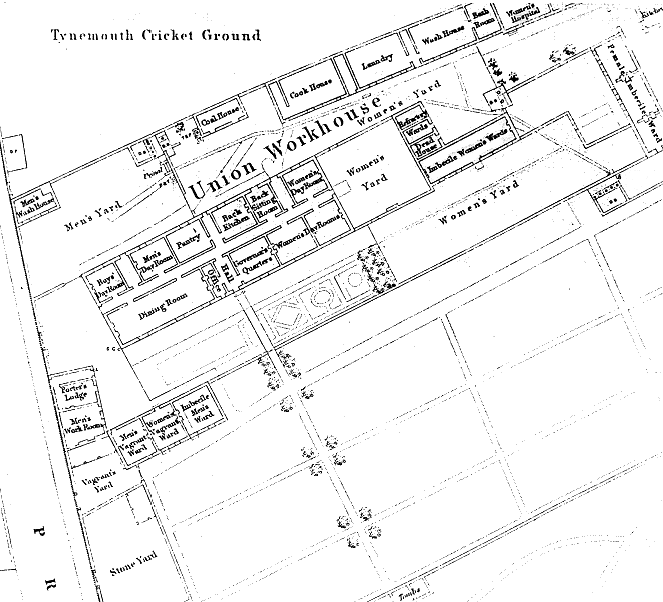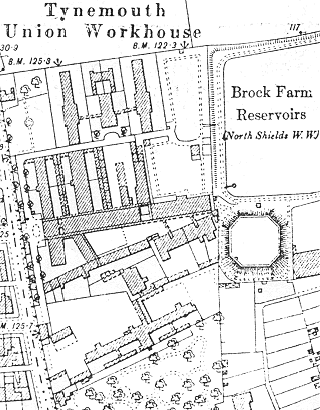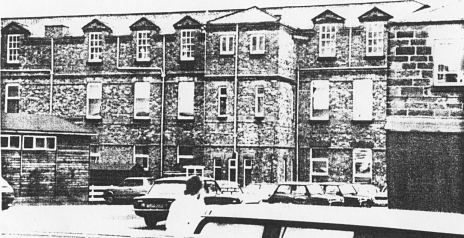Tynemouth, Northumberland
Up to 1834
A directory of 1827 recorded that:
In the same year, South Blyth (or Blyth Nook) had a workhouse at Crofton with Brodie Adam as its governor.
After 1834
Tynemouth Poor Law Union was formed on 5th September 1836. Its operation was overseen by an elected Board of Guardians, 47 in number, representing its 24 constituent parishes and townships as listed below (figures in brackets indicate numbers of Guardians if more than one):
County of Northumberland:
Backworth, Bebside, Burradon, Chirton (4), Cowpen (2), Cramlington, Cullercoates, Earsdon, East Hartford, West Hartford, Hartley (2), Holywell, Horton, Long Benton (5), Monkseaton, Murton, Newsham and South Blyth (2), Preston, Seghill, Seaton Delavel, North Shields (5), Tynemouth (7), Wallsend (4), Whitley.
The population falling within the union at the 1831 census had been 47,715 with townships ranging in size from East Hartford (population 12) to Tynemouth itself (10,182). The average annual poor-rate expenditure for the period 1834-6 had been £13,140 or 5s.6d. per head of the population.
Initially, the union continued to use the existing parish workhouse, which was situated on Preston Lane (now Preston Road) in North Shields. Then, in 1848, a new union workhouse was erected, also located on Preston lane. Details of the workhouse layout at that time can be seen on the 1857 map below:

Tynemouth workhouse site, 1857.
On 7 May 1881, a new swimming bath was opened at the workhouse for the use of the boys in the institution. Below is a report of the event.
Saturday afternoon, a new swimming bath, which has been erected by permission the Guardians, with a view of teaching the boys the Union to swim was formally Opened the Tynemouth Workhouse. The bath is an excellent one, and well adapted for tab purpose for which it has been built. On one side of the boys' playground, a substantial brickwork room, measuring about 50 feet long by 22 feet wide, has been erected. In this the bath has been made. The swimming bath itself is 30 feet long, by 6 feet 6 inches wide, and can be filled to a depth of 5 feet required. At the end is another bath, the same width and depth as the large one, and about 6 feet long. This is to used as a washing tub for the smaller children on bathing days. Both baths are supplied with hot and cold water — the hot water being obtained from heating apparatus the corner of the building. At one end of long bath there is a flight of wooden steps the lads to dive from. The place is most comfortably fitted up in every respect. The only cost to the Guardians for this excellent addition to the Union has been for the materials and hot water apparatus, as the whole of the labour — brick-laying, cementing, carpentering, &c, has been done by the inmates. The work could not have been better accomplished even if it had been done by outside workmen. The only guardian present at the opening was Mr Jonathan Eskdale. The lads, who seemed very eager to dip in the new bath, were admitted in batches of half-a-dozen at a time, by Mr Watson and his assistants. Messrs Moore and Baguley, of the Tynemouth Swimming Club, who have accepted the, position of honorary swimming masters the Union, were in attendance and took great pains with the boys. Both gentlemen entered the bath, and very cleverly gave exhibitions of the proper movement of the limbs when swimming. Baguley also addressed the boys, and urged them to do all they could to make themselves efficient, as the Tynemouth Swimming Club, intended offering this year's gala, a special prize for the "Workhouse lads." Mr Jonathan Eskdale, he added, had promised the prize,
The workhouse was substantially enlarged in 1886-9 after the acquisition of the cricket ground to the north of the existing site. The work included demolition of the original main workhouse building, although the existing buildings along the northern boundary wall were retained, along with the porter's lodge. The new workhouse layout are shown on the 1895 map below:

Tynemouth workhouse site, 1895.
New infirmary blocks were added in 1903 and 1909, followed by an operating theatre in 1913, mortuary in 1920, and receiving wards in 1925-6.

Tynemouth main workhouse building from the west.
In 1930, the workhouse became Tynemouth Corporation Public Assistance Institution, and subsequently Preston Hospital. The hospital closed in the mid-1990s and the site has been completely redeveloped for housing.
Scattered Homes
The Tynemouth Union established a number of scattered homes for housing pauper children. The homes were located at Earsdon, Monkseaton, and in North Shields at Park Crescent and Queen Alexandra Road. In each case there were actually two homes — one for boys and one for girls. A Receiving Home for processing new arrivals was located at Military Road, North Shields. In all, the homes provided 136 places.
Staff
Inmates
Records
Note: many repositories impose a closure period of up to 100 years for records identifying individuals. Before travelling a long distance, always check that the records you want to consult will be available.
- Tyne and Wear Archives, Discovery Museum, Blandford Square, Newcastle upon Tyne NE1 4JA. Holdings include: Guardians' minute books (1836-1931); Admissions and discharges (1867-1947); Creed registers (1884-1949); Births (1914-48); Deaths (1896-1949); Lunatics register (1911-48); etc.
Bibliography
- White's History, Directory & Gazetteer of Durham & Northumberland, 1827
Links
- The union's early correspondence with the central poor-law authorities is online on the TNA website .
Unless otherwise indicated, this page () is copyright Peter Higginbotham. Contents may not be reproduced without permission.


